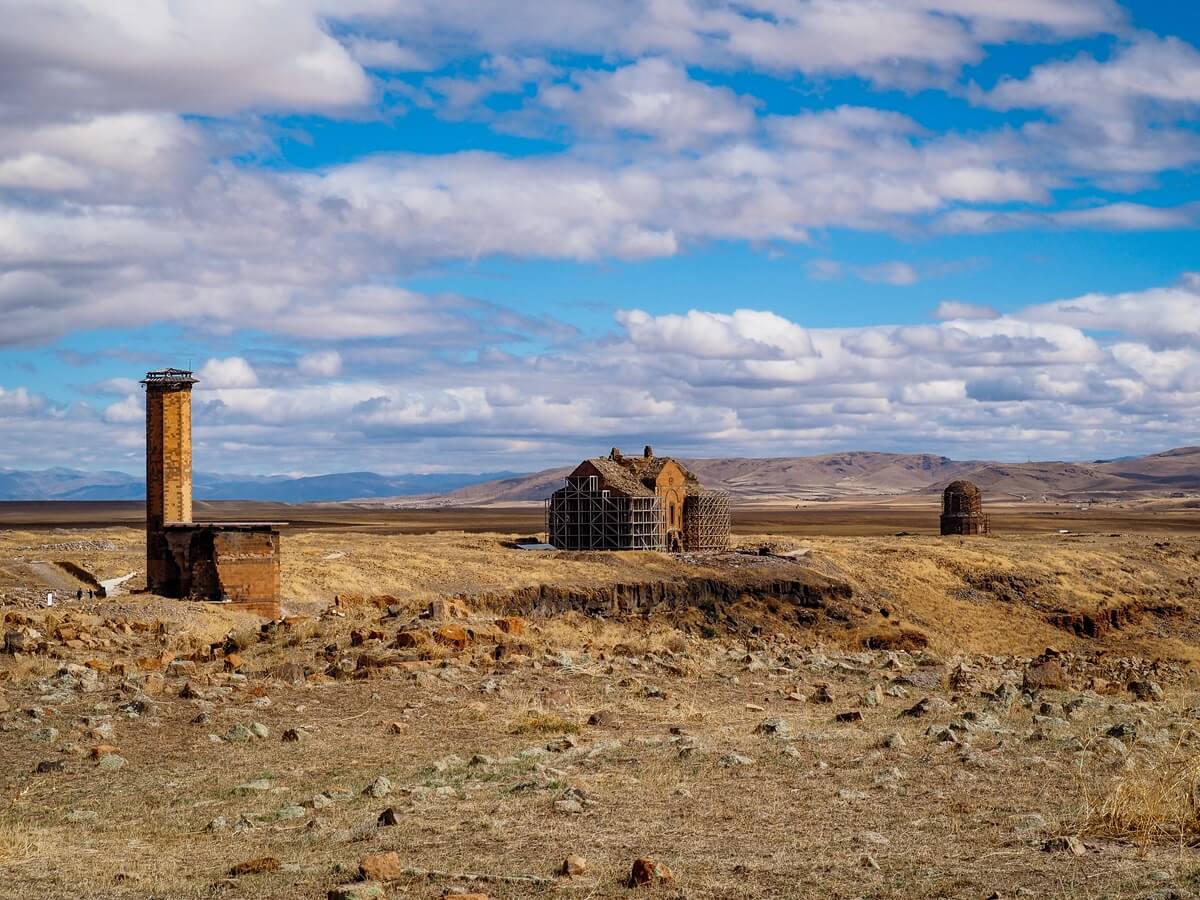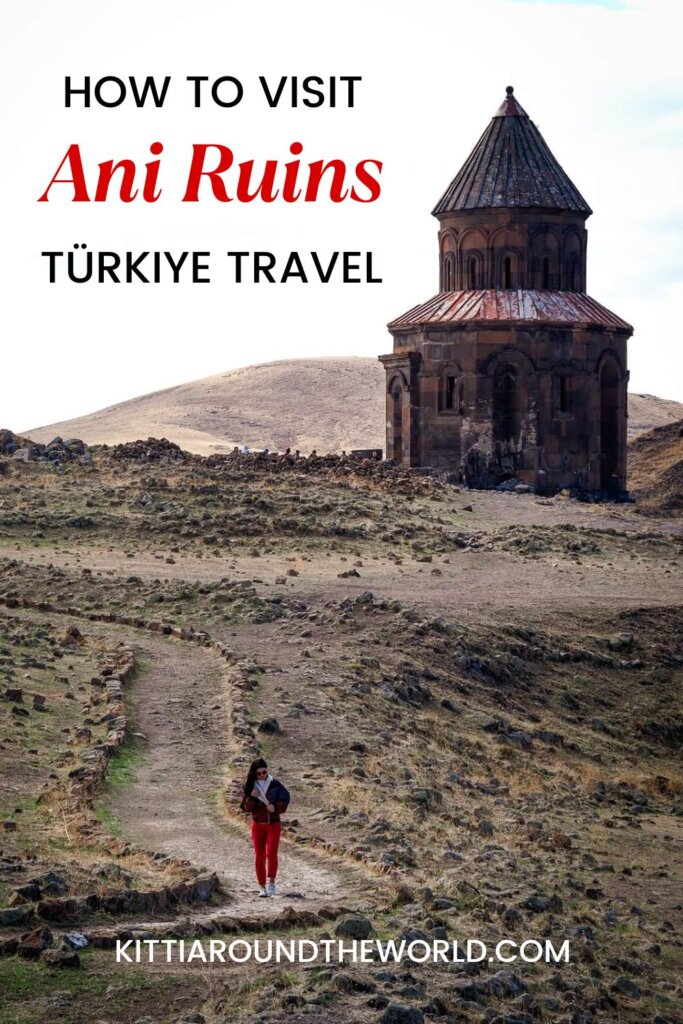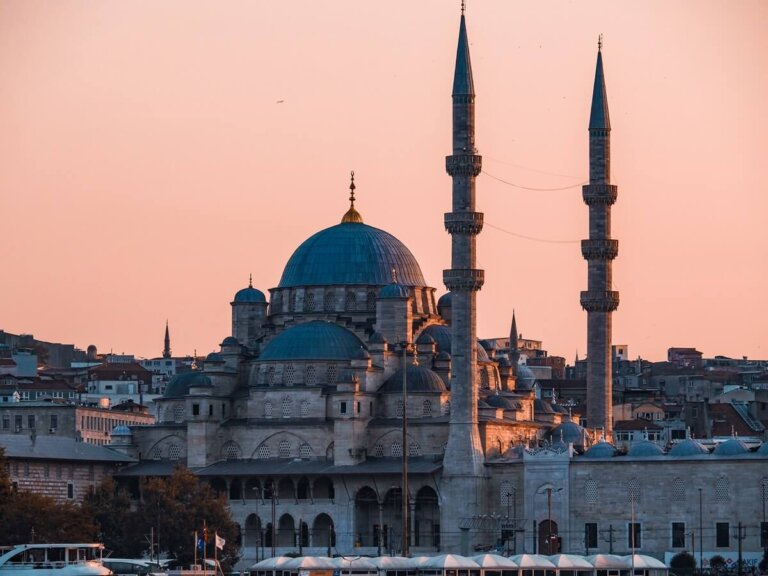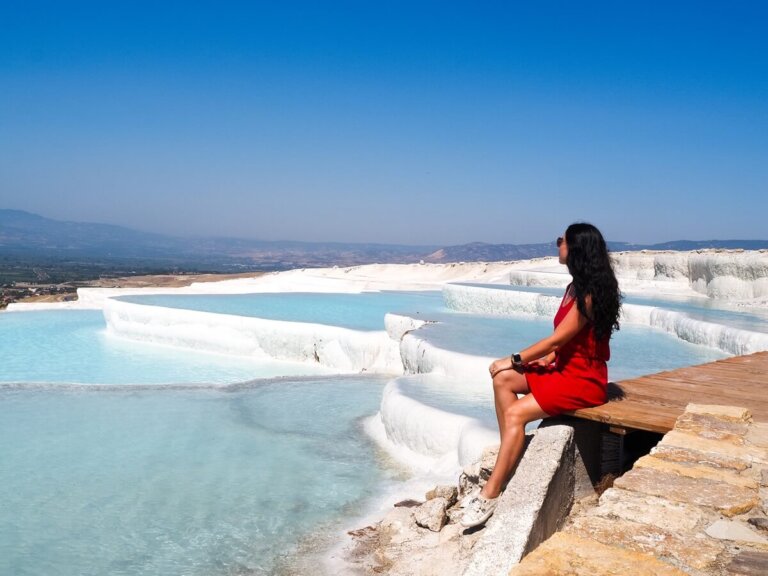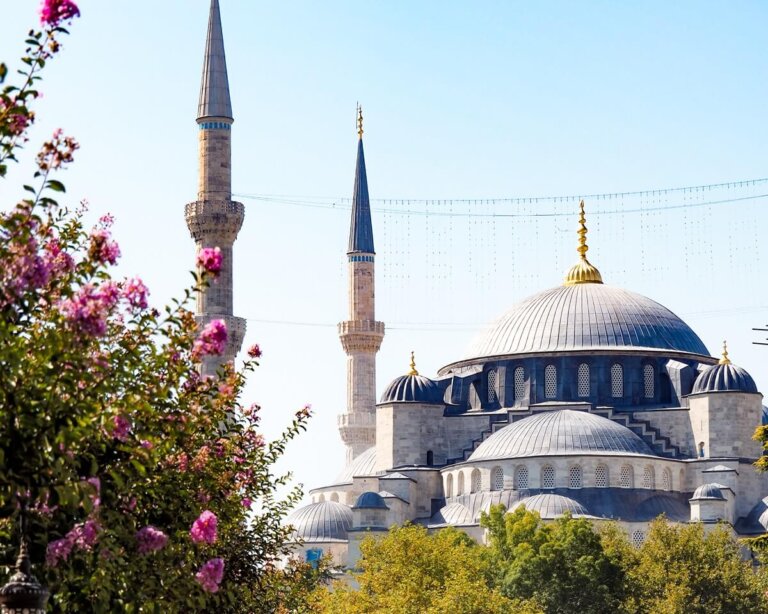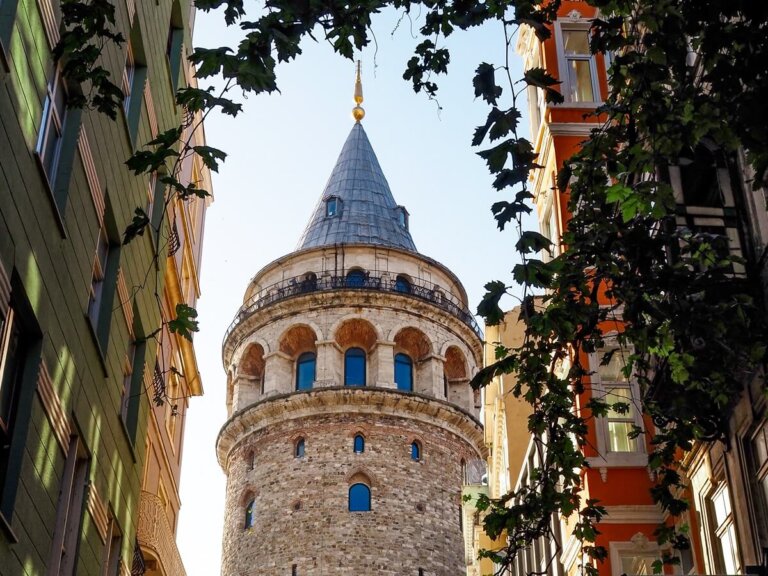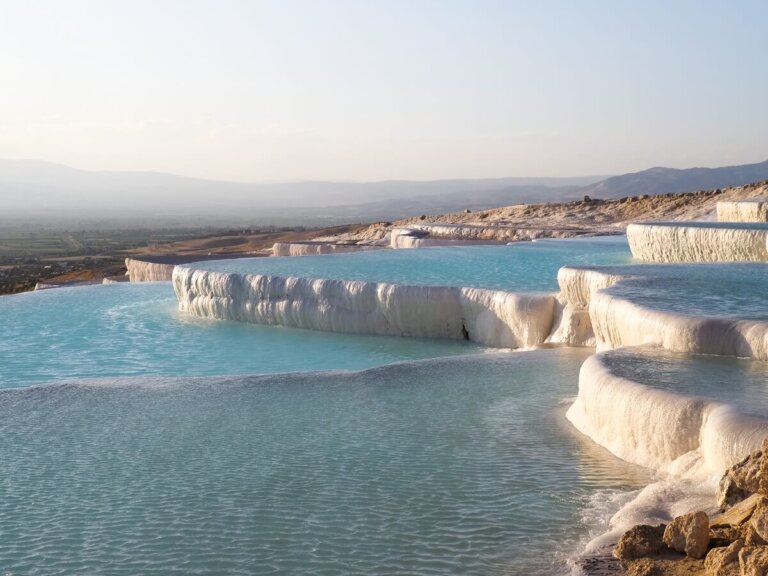How to Visit Ani Ruins from Kars in Eastern Türkiye (Turkey)
Known by many names, such as ‘the city of 1001 churches’, ‘the city of 40 gates’, or ‘a world city’, the Ani Ruins are a must visit place if you’re travelling around Eastern Türkiye (Turkey). This UNESCO World Heritage Site was inhabited for 2500 years and was once an important stop along the Silk Road. The eerie site is still home to many intact structures, from religious buildings to military ones.
In this guide we’ll provide you with all the necessary details you’ll need to visit the Ani Ruins from Kars. This includes the different ways you can get there, a list of the best landmarks and buildings you won’t want to miss, as well as some other useful information, such as how long you’ll need at the site and when the best time to visit is.
Disclosure: This post may contain affiliate links, which means we may receive a small commission if you click a link and purchase something. Clicking these links won’t cost you anything, but it will help us to keep this site up and running! Learn more about our affiliate policy.
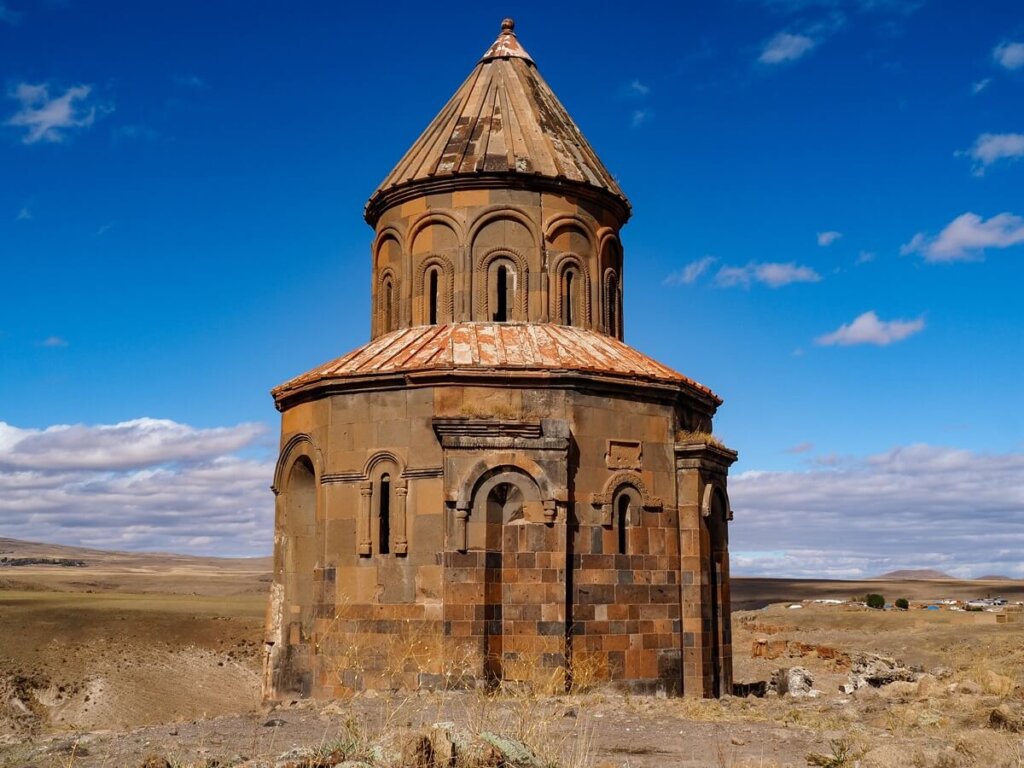
About Ani Ruins
The Ani Ruins are located just over 40km from the city of Kars on a secluded plateau in eastern Anatolia. The site overlooks a ravine and Arpaçay River, which together act as a natural border with Armenia. It’s that close to the border that we could see the Armenian flag without binoculars or a zoom lens.
Ani has a long history and has been home to many civilisations over the centuries. In the 10th century it was the capital of the medieval Armenian kingdom of the Bagratides. Then, it was ruled by the Byzantines between 1045 and 1064. In 1064 the city was conquered by Seljuk Sultan Alparslan. Then, in 1072, Ani was sold to the Kurdish Shaddadid dynasty whose hands it stayed in until 1200, when the Georgian queen Tamara captured Ani. Throughout all these changes, Ani still maintained its important status along the Silk Road.
However, the Mongol invasion in 1237, a devastating earthquake in 1319 and the change in trade routes resulted in the beginning of Ani’s decline. By the 18th century, Ani was completely abandoned.
Ani was added to the UNESCO World Heritage List in 2016.
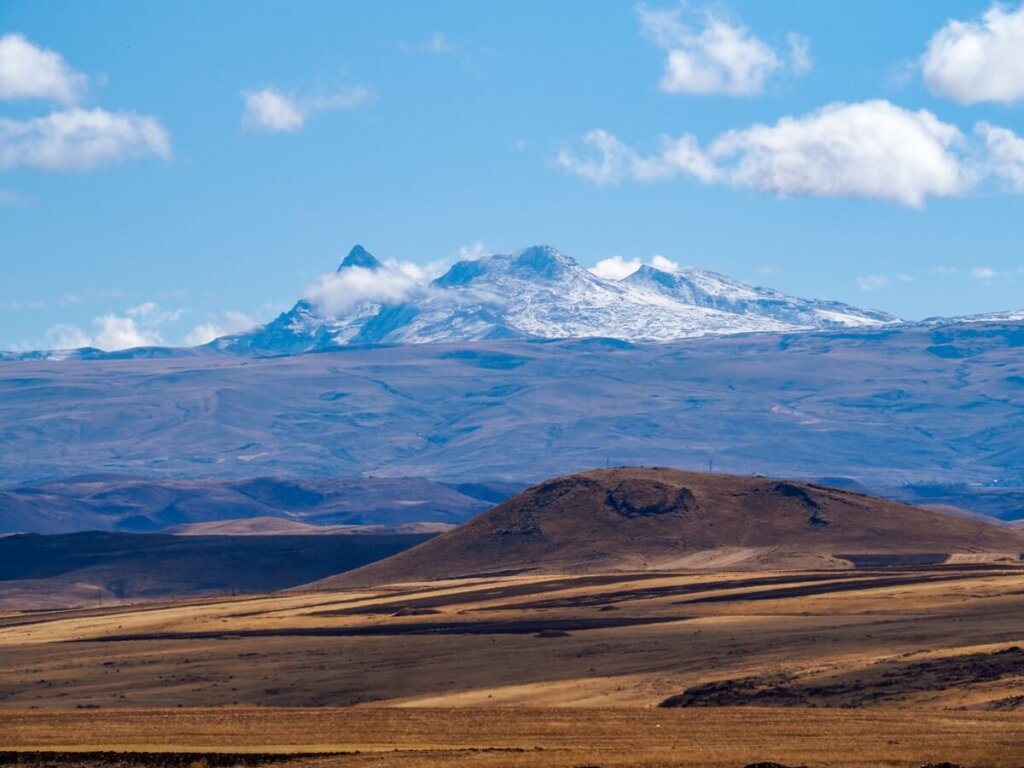
How to Visit Ani Ruins from Kars
There are a few ways you can get to the Ani Ruins from Kars, as follows:
Organised Tour
Possibly the easiest way to visit the Ani Ruins is by joining an organised tour from Kars. Having a tour is also a good way to learn more about the ruins, especially if your tour guide speaks English. Obviously, the downside is that you’ll be with a group of people and won’t necessarily be able to wander around at your own pace. We couldn’t see many tours advertised online compared with other popular places in the country. Therefore, we recommend checking out some local tour operators and/or inquiring with your hotel staff.
Private Vehicle
By Hire Car. If you want to visit the Ani Ruins from Kars independently, then consider hiring a car. This way you’re not relying on tours and you can spend as long at the site as you wish. Just like with the tour operators, we recommend checking out a few local car rental companies.
By Private Taxi. If you don’t fancy driving yourself, another convenient way to get there is to just hire a taxi driver. We actually picked this option because we wanted to see the site without a tour. Since not as many people speak English in Kars, we recommend arranging your ride with your hotel. They can call a reputable taxi driver for you. We had to use Google Translate with the receptionists, but that was absolutely fine. You can agree on the amount of time you want at the site, and the driver will wait outside for you.
Public Transport
Apparently there’s a ‘tourist bus’ that departs from a now – according to Google – closed cafe called Antik Cafe at the corner of Faikbey Cd and Gazi Ahmet Muhtar Pasa Cd. It’s located around here on Google Maps.
When we asked our hotel about the bus departure times, they didn’t seem to know if there was a bus or not, which is why we ended up hiring a taxi driver for our visit.
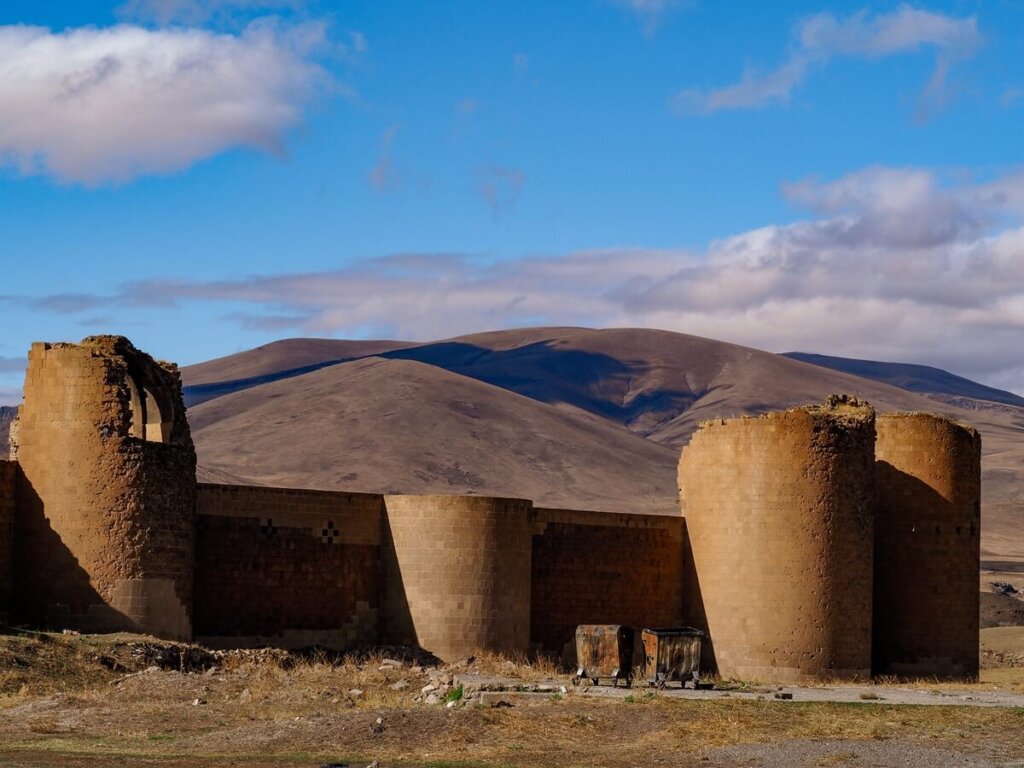
What to See at Ani Ruins
Ani Ruins has many well-preserved residential, religious and military structures. There were a few information boards in English which we found helpful, as they explained a little bit about the different buildings. Below we’ve listed some of the most impressive ones that you definitely shouldn’t miss during your visit.
The Lion Gate and the City Walls
Thanks to Ani’s location, the triangular-shaped site was naturally protected by cliffs on two sides. Although the whole city was surrounded by walls, the northern edge was where they put the most effort into the city’s defense. You can still see the remains of the impressive wall. In fact, we had to walk through the Lion Gate to enter the site, which was one of the main entrances to Ani.
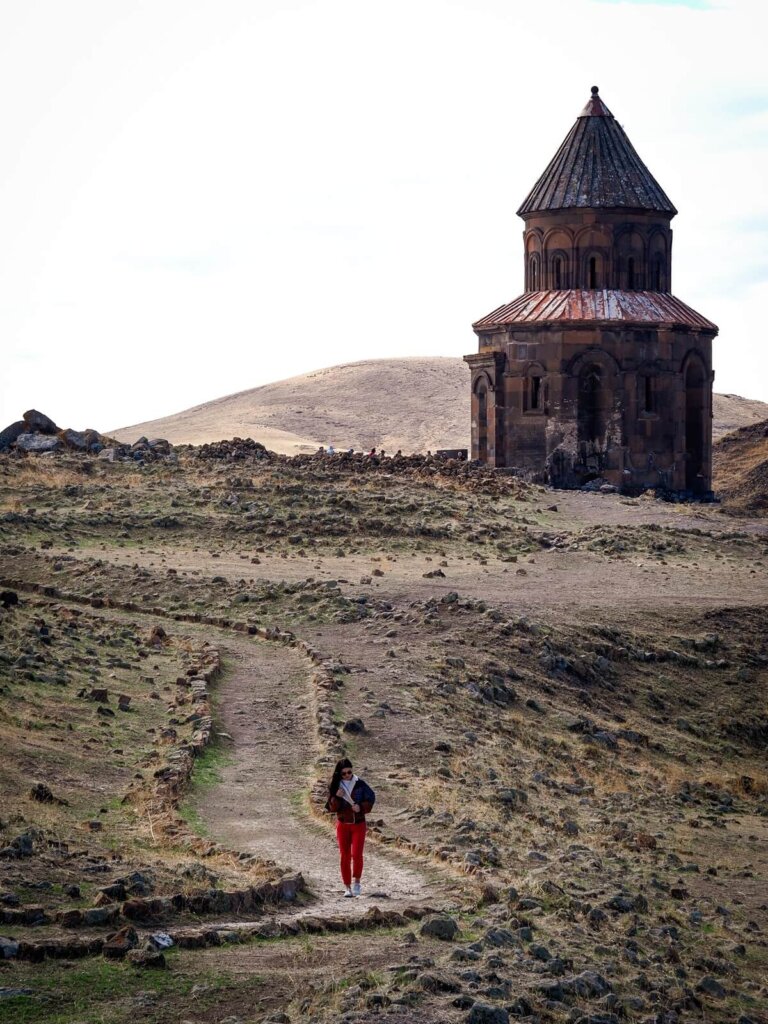
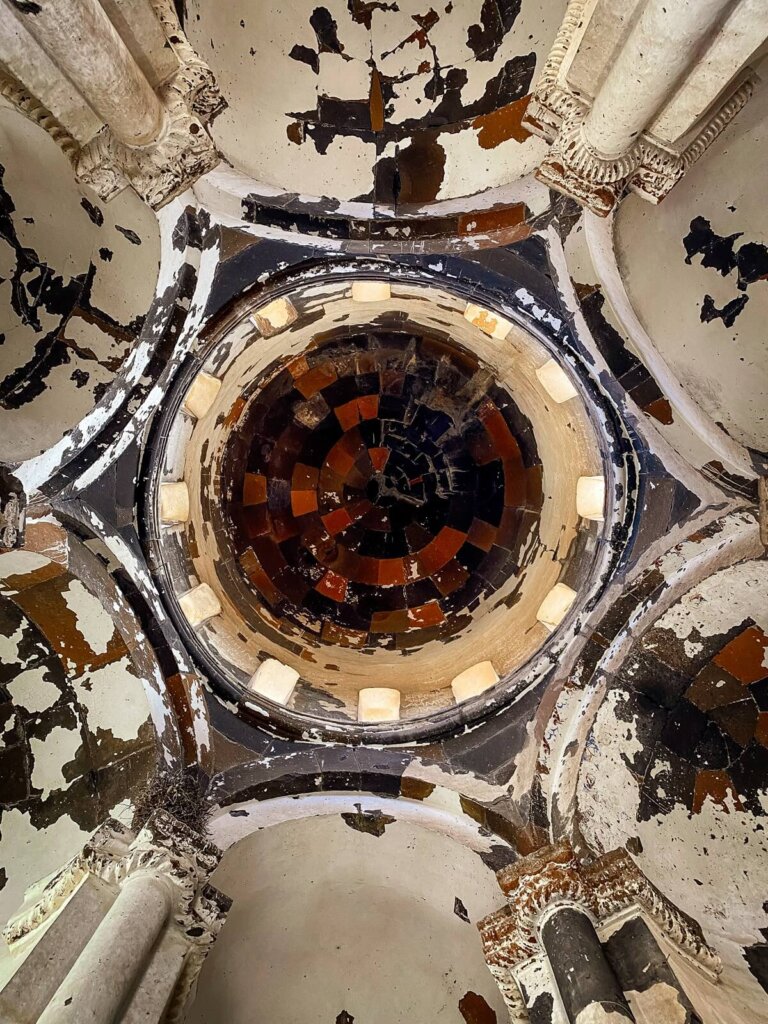
St Gregory (Abughamrents) Church
Possibly the most photographed and best-preserved landmark in Ani is St Gregory Church. Apparently, it dates back to the 10th century and was commissioned by Prince Grigor Pahlavuni as a private chapel for his family.
Inside we saw traces of frescoes which were possibly added in the 13th century.
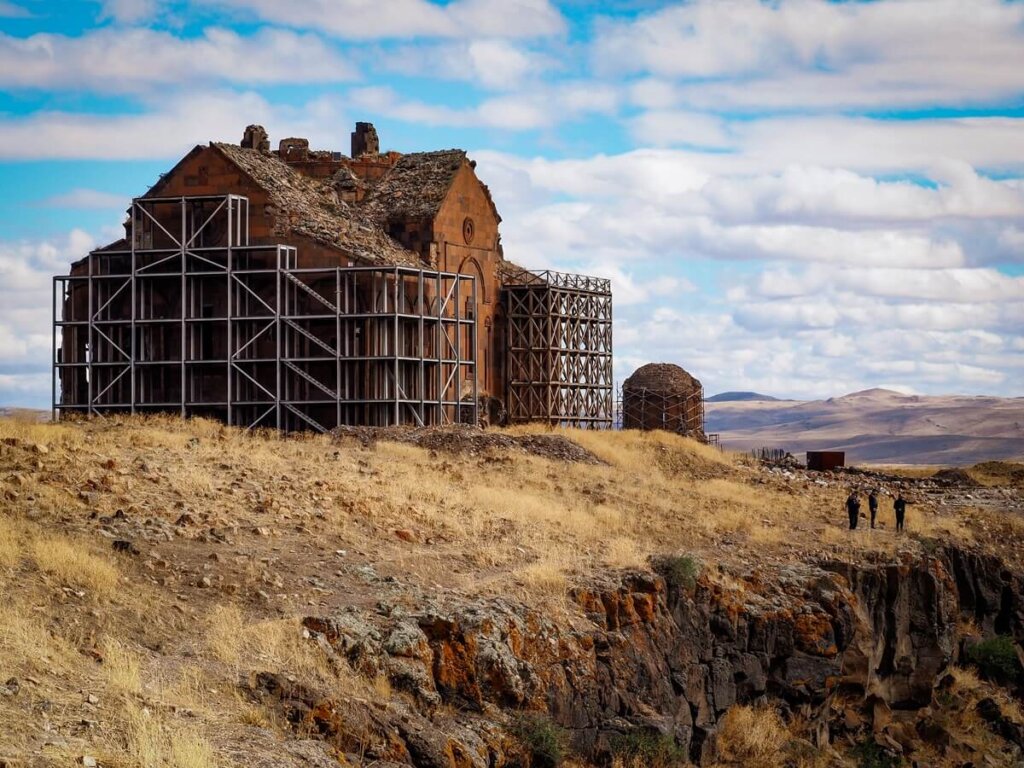
Ani Cathedral
This is probably the largest surviving structure in Ani. Construction on this Armenian Cathedral started in 989 under King Smbat II. The cathedral was completed in 1001 by Queen Katramide, who was the wife of King Gagik. It was dedicated to Mother of God Maria. When the Seljuk took control of Ani in 1064 the cathedral was converted into a mosque and was re-named Fethiye Camii, or Victory Mosque.
Apparently, the dome collapsed in the 1319 earthquake but, luckily, the exterior survived. If you step inside, you can see up to the sky through where the dome used to be.
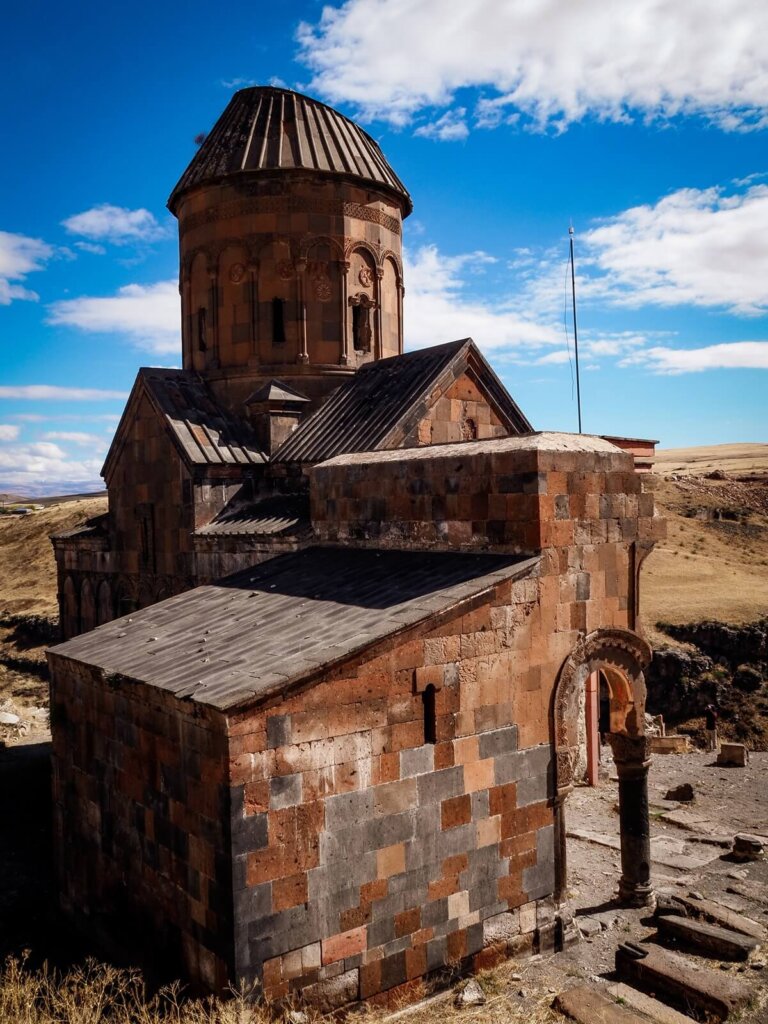
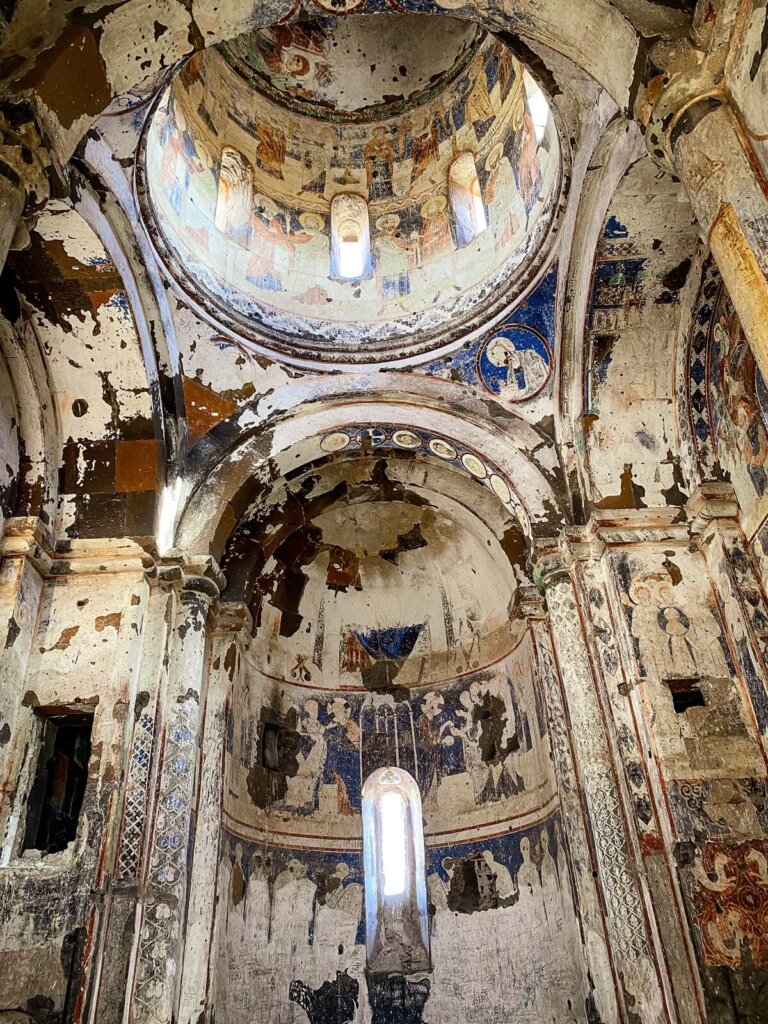
Tigran Honents Church
According to the information boards, this church was built in 1215 by a wealthy merchant called Tigran. It is dedicated to St Grigor Lusavorich, who was the founder of the Armenian Apostolic Church.
The interior is completely covered in beautiful frescoes describing the Life of Christ and St Grigor Lusavorich. We almost skipped walking out to this one, but we’re so glad that we did. It was definitely worth it to see the interior.
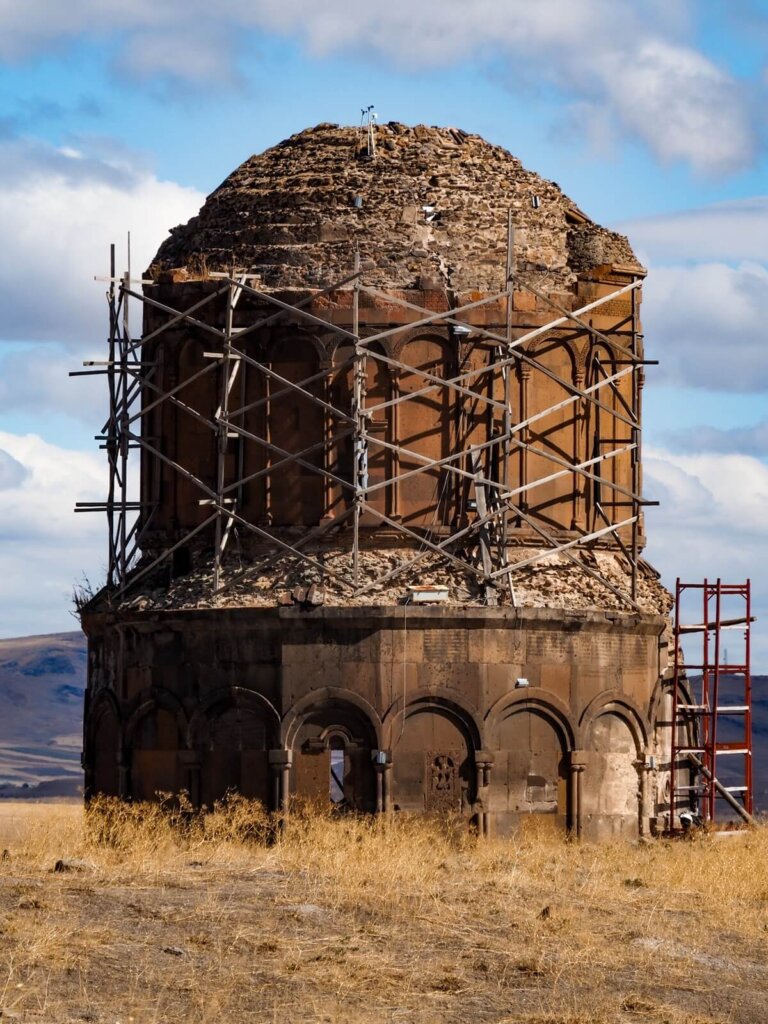
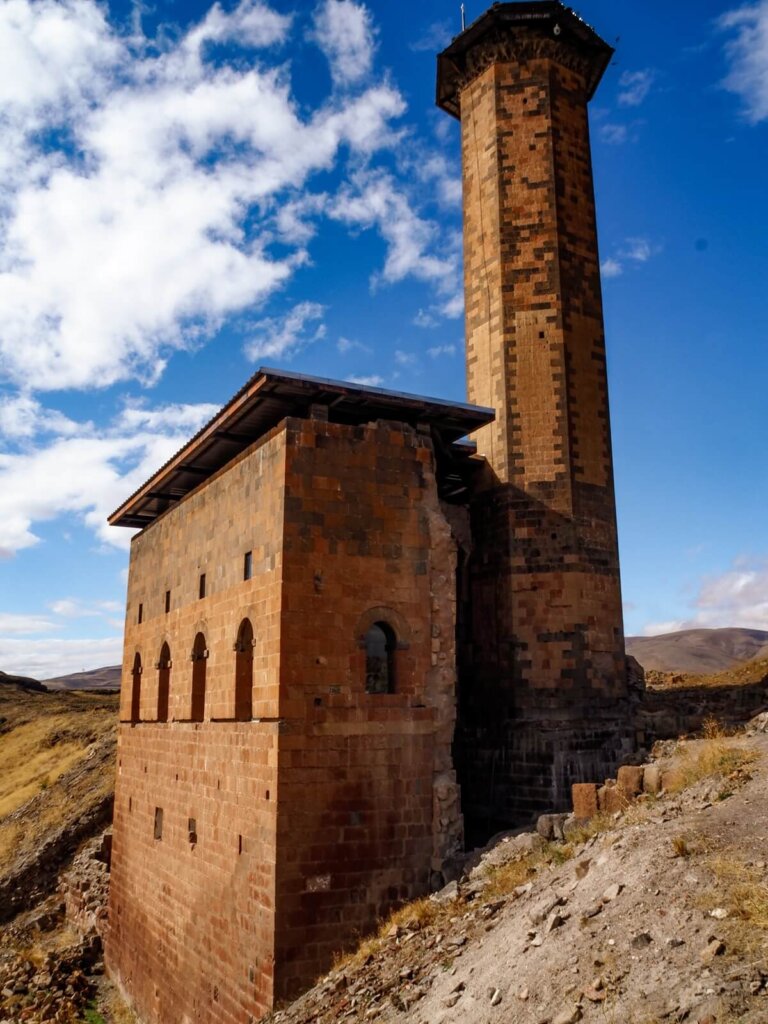
Church of the Redeemer
The Church of the Redeemer is quite an interesting ruin. From one end it looks like a round structure with some scaffolding. However, as we walked around it, we noticed that half of the building was missing.
The church was built around 1030 and was pretty much intact until 1957 when a lightning storm cut the building in half.
Ebul Manucehr Mosque
Built in 1072 by the Seljuk Turks, it is considered one of the first mosques built in Anatolia. The mosque, perched on the slope overlooking the river, makes for an impressive structure from all angles.
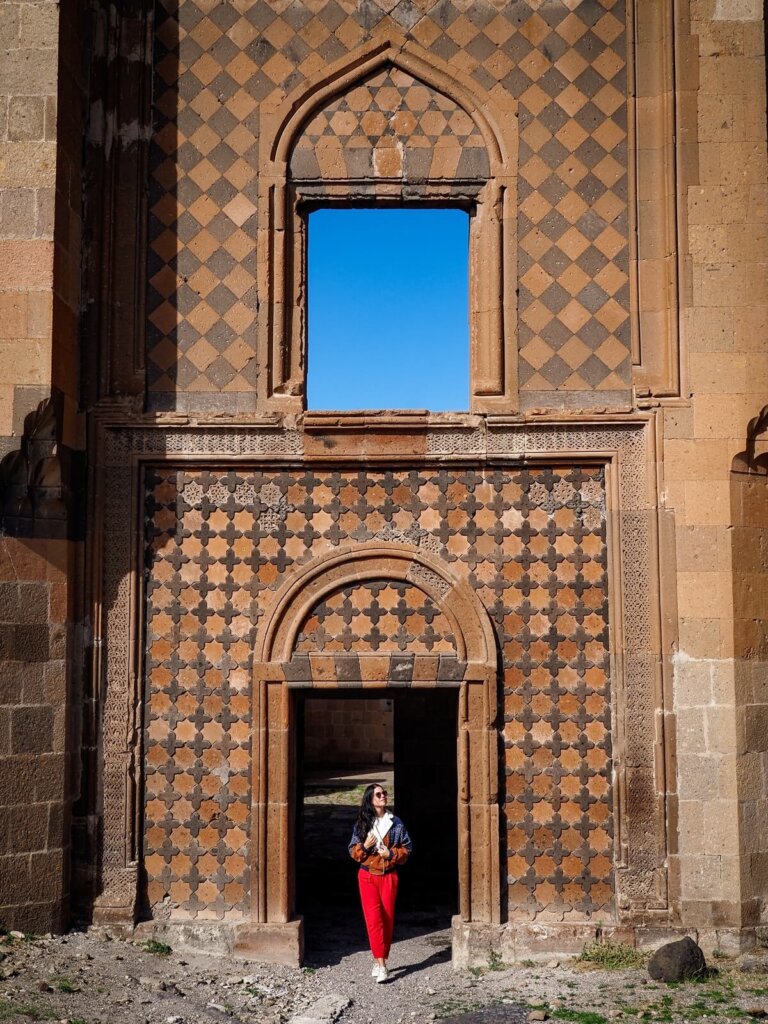
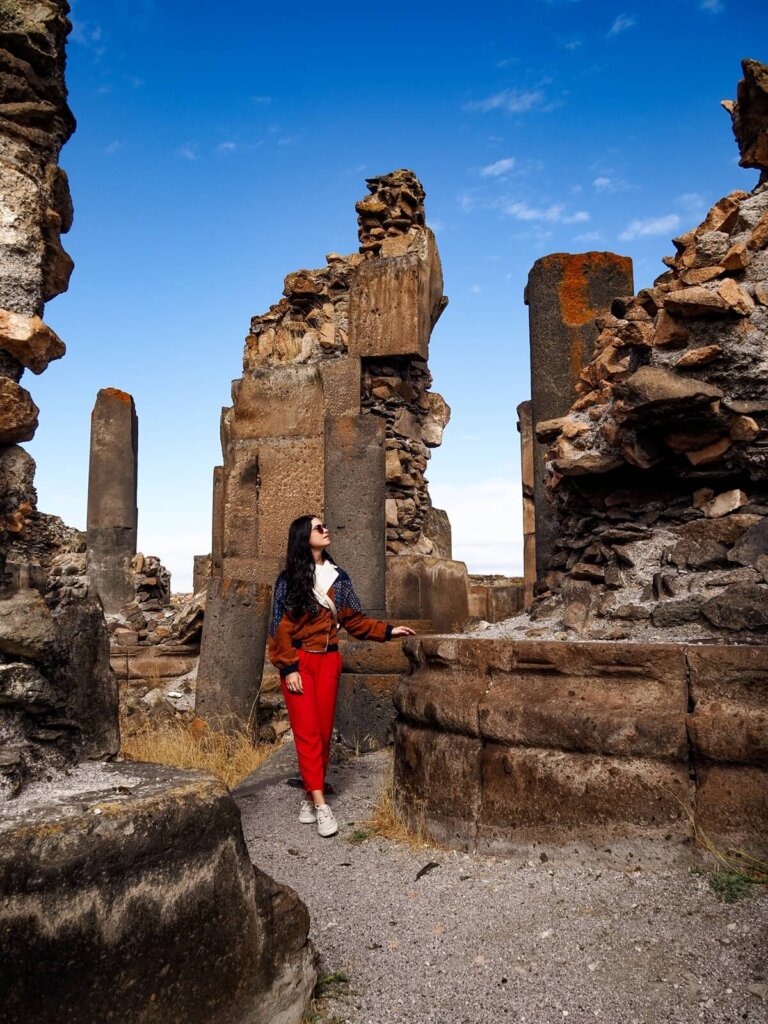
Seljuk Palace
The Seljuk Palace, or the Merchants Palace, stands on a steep cliff overlooking the Bostanlar Creek. It was built between the 12th-13th centuries, although the exact date is unknown.
The entrance is via a two-storey structure that led us to a room and courtyard, with more rooms off to the sides. Pretty much everything inside looked modern though due to all the restoration work.
Gagkashen Church
This circular church was built between 995-1000 / 1001 -1005 by architect Trdat, on the orders of King Gagik I. It’s one of many structures in Ani where there’s unfortunately not much left to see today.
However, thanks to the photo on the information board we could see how this stunning building would’ve originally looked. The structure was pretty ambitious though, and didn’t stand for too long before collapsing.

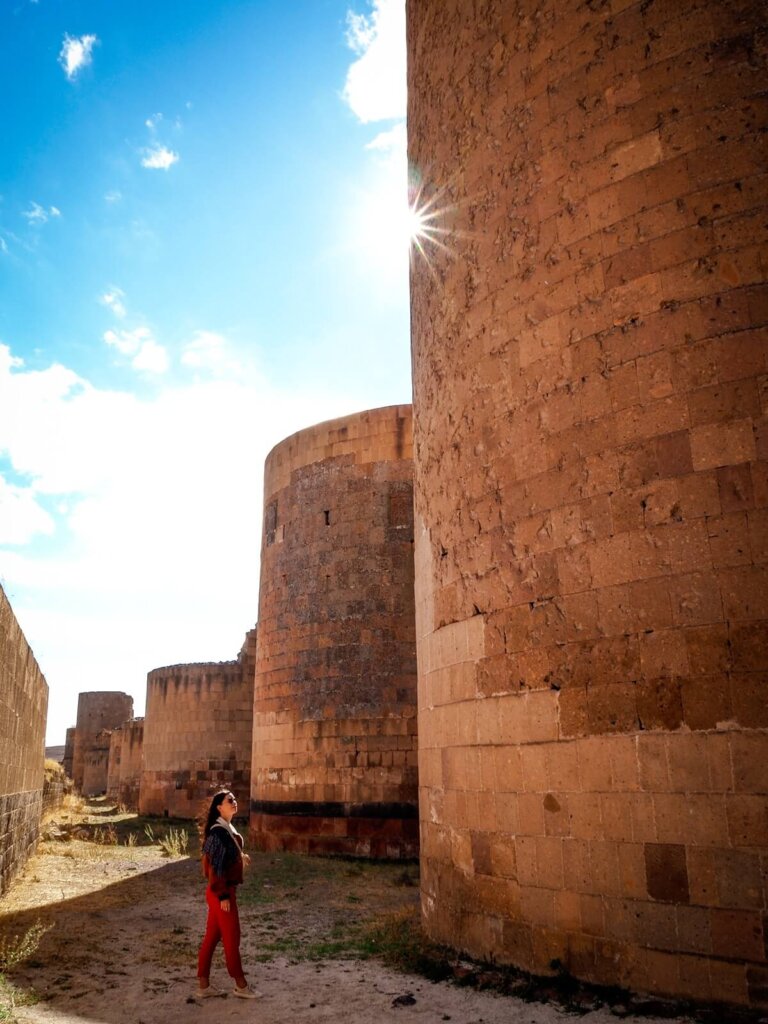
Opening Times and Entry Fee to Ani Ruins
The site is open every day between 8AM and 7PM during the summer months, and until 5PM during winter.
A single entry is currently 8 EUR. Note that prices are prone to change, so always check the official website for more up-to-date information.
Top Tip. If you’re staying in Türkiye for longer, then we recommend getting the Türkiye Museum Pass for 165 EUR. It might seem like a lot, but when you add up the individual entry fees from each place you want to visit, it may work out cheaper in the end. You can check out what’s included in the pass here.
Best Time to Visit Ani Ruins
You can visit the Ani Ruins all year round, however the best time to visit will mainly depend on your interests and what other things you want to do during your visit to this area.
The Ani Ruins are located in the coldest region of Eastern Anatolia. This means that if you’d like to enjoy a winter-wonderland landscape then definitely visit during the winter. This way you can also go skiing and enjoy the Tourist Eastern Express train ride from Ankara to Kars. Note that this can be quite a popular time of year to visit, although we don’t think that the ruins will ever be as busy as Cappadocia or Pamukkale during their peak seasons.
Summer time is also normally busy, but the temperatures are definitely much warmer than in winter. We visited around mid October, which is just on the shoulder season. The temperatures were very pleasant, especially after hiking in Cappadocia in some crazy heat. We believe that spring would also be a good time to visit, especially if you’re also visiting other parts of the country.
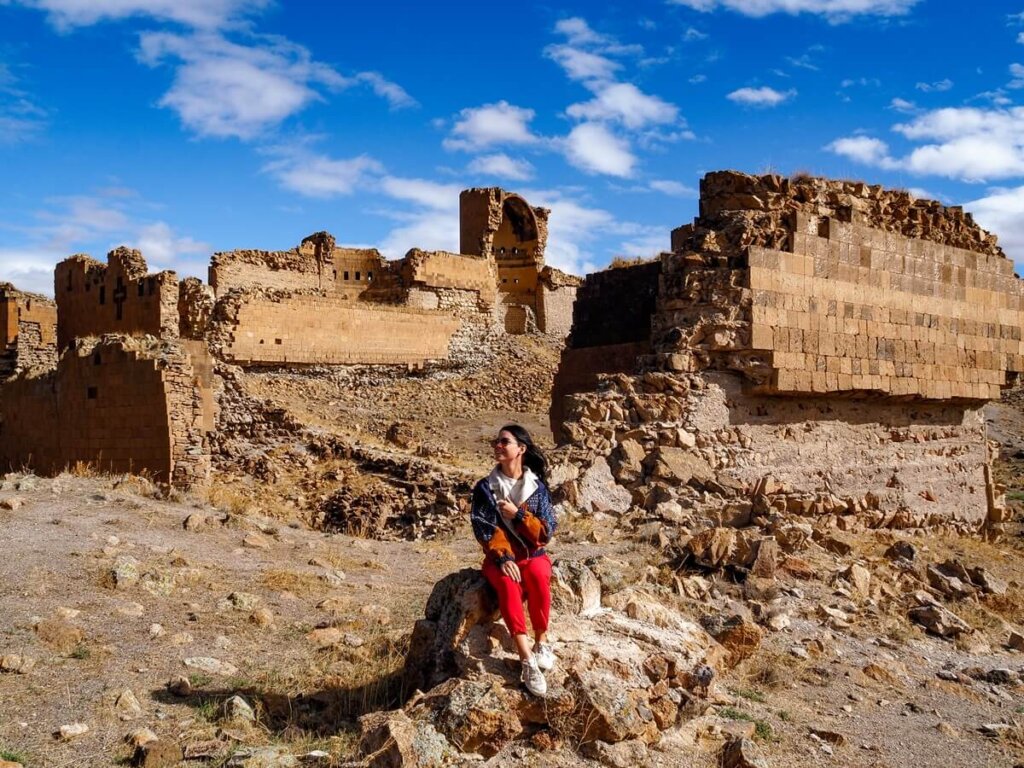
How Long Do You Need at the Ani Ruins
The Ani Ruins cover quite a large area, so we recommend allocating a minimum of 2 hours to see most of it. However, you could easily spend even longer there. For reference, we spent just over 3 hours walking around, which felt like a sufficient amount of time to see most of the site’s landmarks.
Apparently, if you’re taking the local tourist bus, it’ll give you about 2 hours before it departs back to Kars. Obviously, if you’re on a tour, they will guide you through the site.
Read Next: A Guide to Visiting Kars
What to Wear and Bring with You when Visiting the Ani Ruins
We recommend wearing weather appropriate clothing when visiting the Ani Ruins from Kars. If you’re here during winter, then definitely wear something warm, including a hat and gloves. Even during the summer you’ll want to wear layers.
In terms of footwear, we highly suggest wearing closed toed and comfortable shoes. You’ll be walking around a lot, so you don’t want to end up with aching feet. Closed toed shoes aren’t a must (unless it’s freezing cold), but since you’ll be walking in and out of ruins, we feel it’s the safer option.
There isn’t much shade there, so wear SPF and a hat during the warmer months. We recommend bringing enough water with you and having a packed lunch or some snacks too. There are a few places you can buy food at the entrance though.
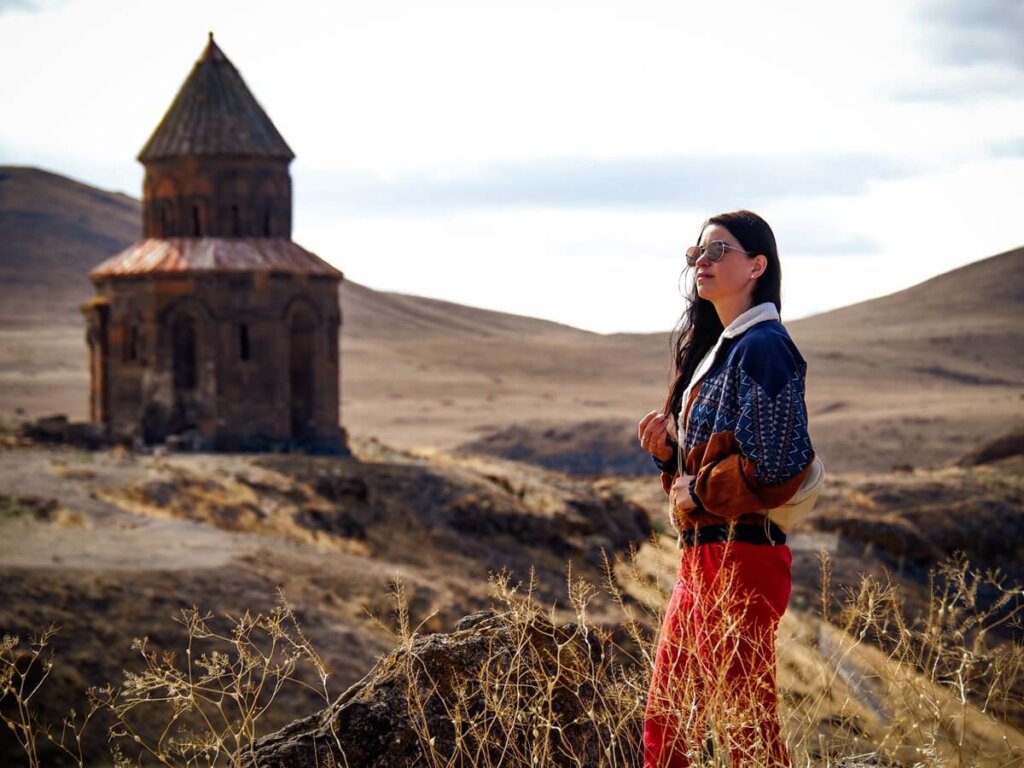
Final Thoughts on How to Visit Ani Ruins from Kars
Our main reason for travelling all the way to Kars was to visit the Ani Ruins. It felt pretty surreal walking around this eerie site, and it was hard to imagine that it was once a bustling city. The historic site actually reminded us of the ghost town of Kayaköy near Fethiye along the Turkish Riviera that we’d visited earlier in our trip.
Have you ever visited Ani Ruins from Kars before? If so, how did you get there and what was your experience? If not, would you add a visit to Ani Ruins to your Turkish itinerary? Let us know in the comments below.

